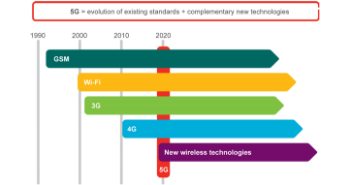Editor’s Note: Welcome to our weekly Reader Forum section. In an attempt to broaden our interaction with our readers we have created this forum for those with something meaningful to say to the wireless industry. We want to keep this as open as possible, but we maintain some editorial control to keep it free of commercials or attacks. Please send along submissions for this section to our editors at: dmeyer@rcrwireless.com.
LTE-based fourth-generation wireless networks have become the new nexus of the IT industry. A multitude of companies – from handset makers to software developers and from network operators to e-commerce players – are pursuing new business opportunities amid consumers demand for faster and more reliable mobile Internet. However, 4G networks are at an early stage of deployment, and according to Cisco Systems estimates, 4G networks are anticipated to reach 10% adoption rate by 2017.
And while 4G networks are a work in progress, the wireless industry has embarked upon an ambitious new project: LTE-Advanced. This version of LTE on steroids promises more than three-times the data speeds than basic LTE networks. LTE-A technology does it by incorporating five “high-octane” network features: carrier aggregation, increased MIMO, coordinated multipoint transmission, heterogeneous network support and relays.
At a time when so much is in the thin air, a segment of the industry has started evangelizing the next-generation wireless networks: 5G. Fifth-generation wireless is a term referred to research papers and projects for the next major phase of mobile telecommunications standard beyond 4G platforms. Here, the wireless industry is considering a variety of technologies, including new data coding and modulation techniques, better interference management, densely-layered small cells, multi-hop networks and advanced receiver designs. Millimeter-wave technology is also a part of that bigger pie.
Truth about 5G
Now, while 4G is still evolving, and 5G is in an embryonic stage, the question is “what’s the big rush?” First and foremost, mobile data traffic is growing exponentially. Moreover, until now, the wireless industry has mostly focused on raw bandwidth. However, the 5G network debate is eventually moving beyond the tired discussion of raw speed and is starting to focus on pervasive connectivity to lay grounds for a fast and resilient link to the Internet whether a mobile user is in a subway train, at the top of a skyscraper or in an exhibition center.
According to a 2011 study from Morgan Stanley, the growth curve for the mobile Internet could be around twelve-times as steep as for the desktop Internet, which we remember how transformative that was during the 1990s. The report called the speed of the mobile Internet take-up a revolution the likes of which people haven’t seen before. Mobile phones are reaching into the furthest corners of the world, and according to an International Telecommunications Union study, at the end of 2011, there were as many mobile phones as people inhibiting the planet: nearly 6 billion. Though most of these handsets were feature phones with limited capabilities, during this decade, the technologies will become so cheap that virtually every phone sold will become what the industry calls a smartphone in 2014.
Second, a key merit of the futuristic 5G networks is going to be their ability to handle billions of connected devices and myriad of traffic types. In other words, what is transformative about the 5G technology is its ability to offer different capabilities for different traffic types: it will serve industrial Internet and Facebook applications at the same time. That’s why the key elements of these futuristic networks span from smart antennas to ultra-dense deployments and from improved coordination between base stations to device-to-device communication.
Majeed Ahmad is author of Age of Mobile Data: The Wireless Journey to All Data 4G Networks. The book traces the roots of mobile data and chronicles how mobile data evolved and eventually reached its pinnacle: LTE-based 4G networks. The book is available in both paperback and e-book formats at major channels.


